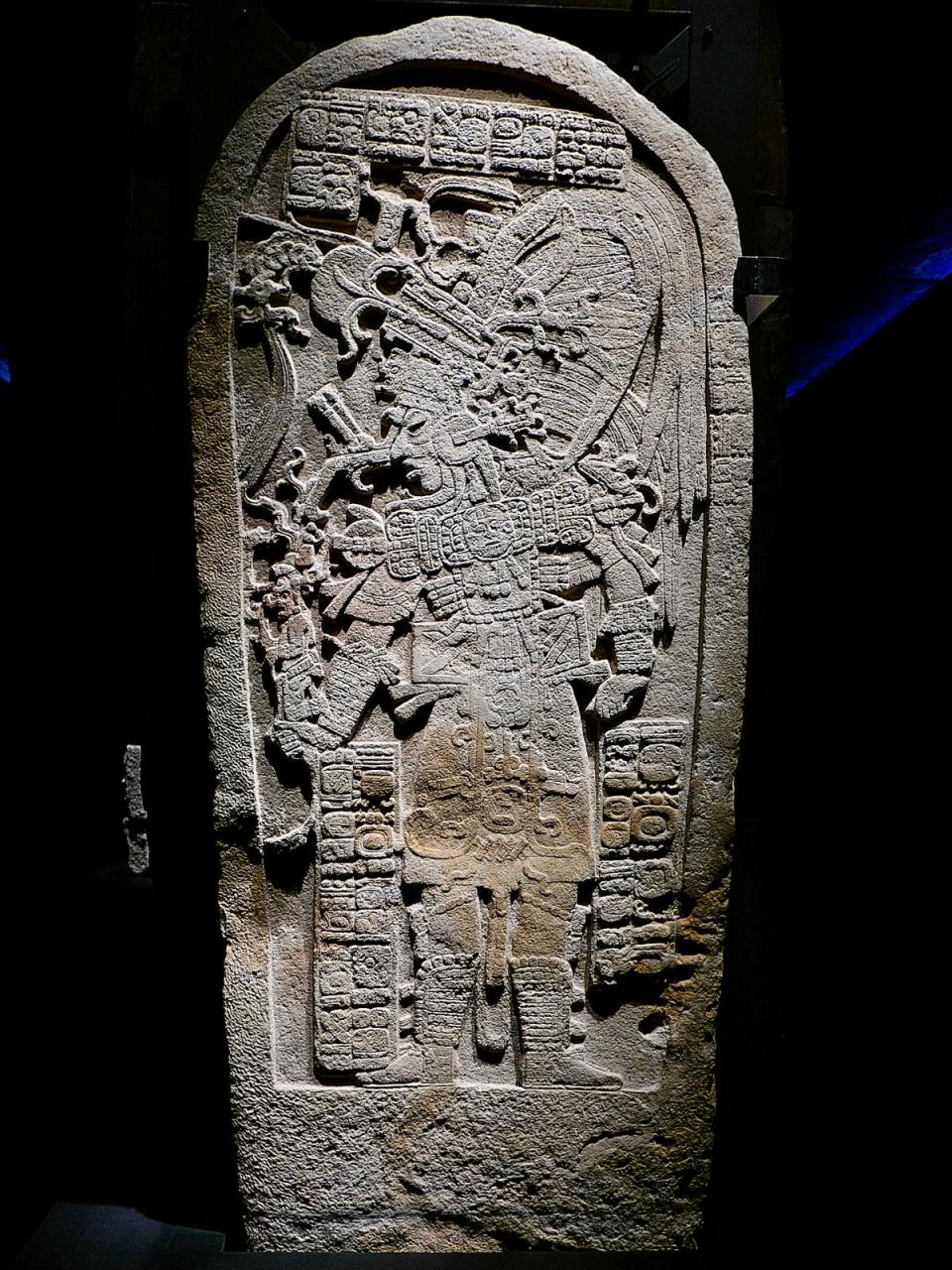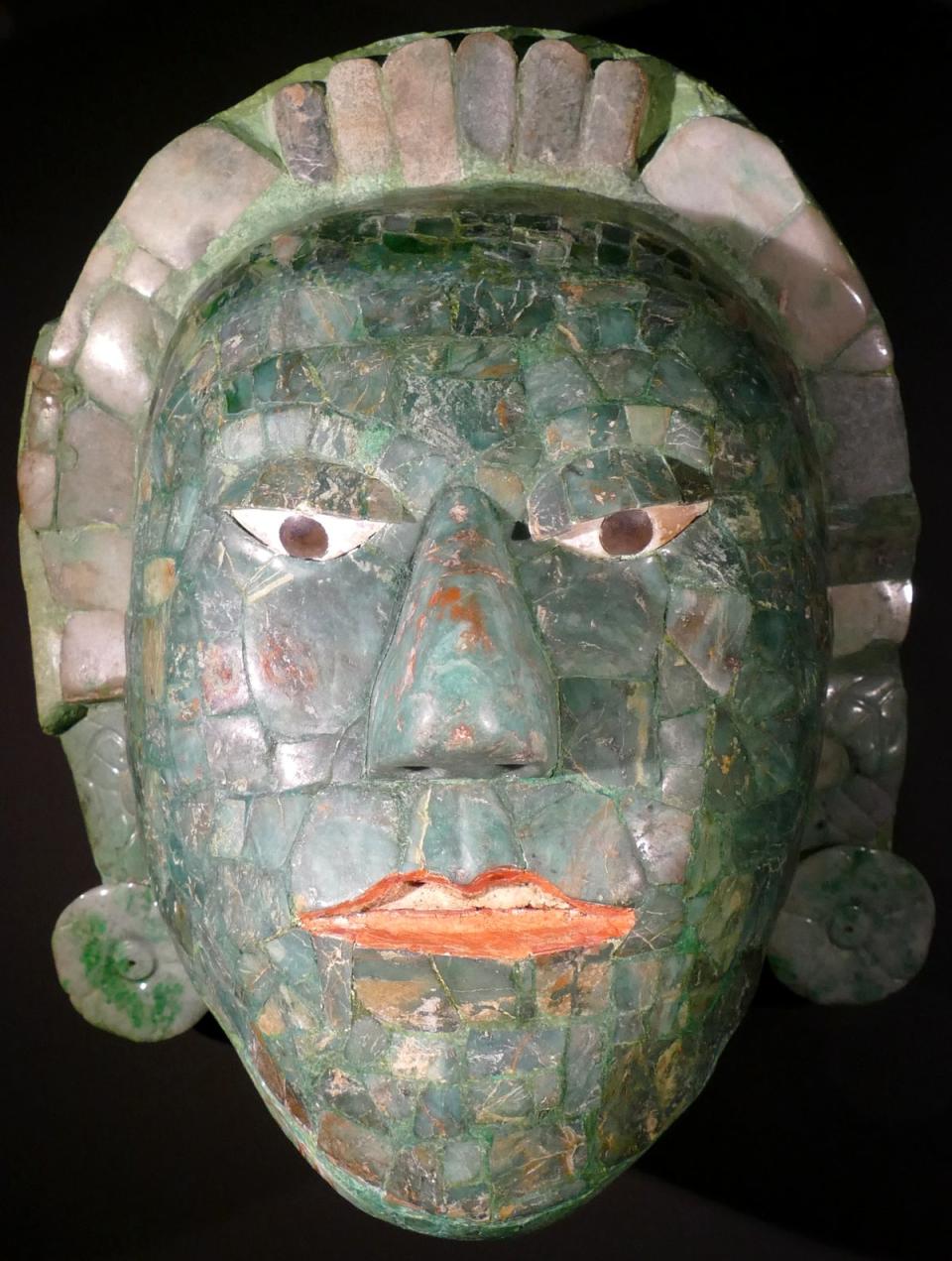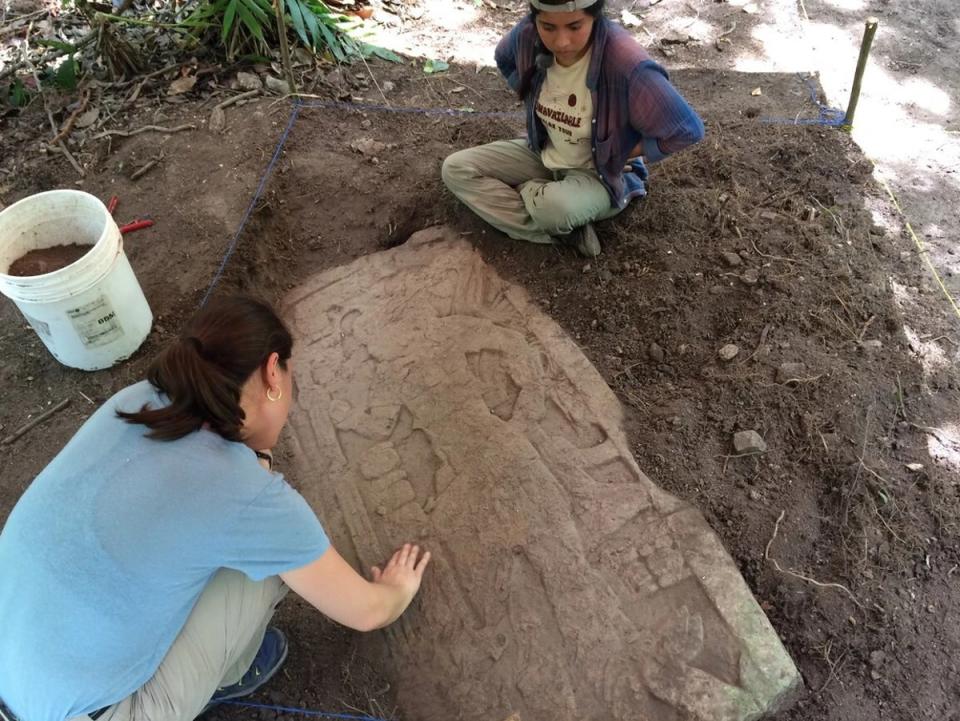A significant archaeological discovery is shedding new light on one of history’s greatest enigmas – the collapse of the ancient Mayan civilization of Central America.
This new discovery – the ritual destruction of symbolic icons of a deposed royal dynasty – is helping to reveal the complexity of that decline.
Combined with historical data from transcribed Maya hieroglyphic texts from other sites, the discovery, at Ucanal in northern Guatemala, provides a unique insight into the political instability that appears to have fundamentally changed Maya history.
Archaeologists believe that the new discovery – the skeleton of a long-dead king and sacred funerary regalia – points to a new political system that deliberately discredited the former royal rulers of the Maya kingdom. It is one of the most graphic examples of ancient geopolitical conflict ever found in the Maya world – and is one of the most significant archaeological discoveries in Central America in recent years.
The Maya kingdoms
The Maya civilization consisted of many kingdoms that often competed with each other. Although the new political system (and the defiance event) at Ucanal seems to have given that particular kingdom a temporary new lease of life, it was certainly part of a wider geopolitical instability that ultimately contributed to fundamental changes in many of Maya civilization as a Whole.

That civilization was at its peak between around 600AD and around 800AD. But, by 900AD, the glory days were over for the Maya world. Part of that decline in the ninth century may have been an invasion by people from the western edge of the Maya civilization. Some scholars have argued that Ucanal may have been occupied by these foreigners by the 820s – and the recently discovered ruined evidence shows the great lengths the new rulers went to for spiritual power (and probably the political prestige left) by the public to destroy. a dynasty that was just in their possession.
The Ucanal evidence suggests that the new rulers removed royal skeletons (and sacred funerary regalia of former Ucanal kings) by breaking into their tomb or pyramid tombs. They probably then took those skeletons (and sacred royal regalia) and publicly burned them in one of the city’s large ceremonial plazas. The destroyed material was then used as building material to help the new regime build a new temple pyramid, marking the beginning of a new political era.


Significantly, the deliberately destroyed sacred regalia included king Ucanal’s magnificent jade death mask, a royal crown (part of which was also made of jade), a set of magnificent high-status jade sharks and other personal adornments. , obsidian blades (volcanic glass) – and garments or necklaces made from more than 10,000 seashell beads.
The public burning of the royal skeletons and regalia of the deposited dynasty was very thorough – involving temperatures of over 800 °C which caused the skeletons and the sacred regalia to split.
“This discovery is very significant because it gives us an insight into an important moment in time when there were political, economic and social changes in the Maya world” said one of the main archaeologists who excavated the site, Professor Christina Halperin from the University Montreal. .


“The public burning and desecration of the skeletons of former Maya royalty is a truly revolutionary pivot point that ushered in a new era of political rule among the Maya”, she explained.
Papal
The foreign ruler who seems to have taken over Ucanal (and probably several other Maya kingdoms) was a strong military man named Papmalil (a non-Mayan name) who, according to the title he gave himself, was not looking himself as a traditional Maya ruler. , not to mention as the traditional king of Ucanal, but as a military and political leader, ruling a much larger territory. Indeed the title he bore (Ochk’in KaloomteHe was previously associated, meaning ‘Supreme Warrior of the West’ ) with the rulers of the Central Mexican Empire (Teotihuacan Empire) which had grown about two centuries earlier, more than 500 miles west.
The events in Ucanal, and the many other changes that marked the decline of the Classic Maya civilization across much of Central America, had complex causes, and certainly climate crises (especially droughts), overpopulation, political dissension, problems economic and trade and perhaps also. epidemics and societal instability as well as invasions and wars.
However, as a people, the Maya and much of their ancient culture continued – and indeed have survived to this day. It was only the great Maya cities (some with populations between 30,000 and 180,000) and their magnificent pyramid-building traditions that declined (first, around 900AD in the southern Maya world – and then, around 1400AD, further north ).


The Spanish conquest then defeated the Maya. Although that conquest began in 1523, it took at least 170 years to complete. But the Maya themselves are still a vibrant culture today – with six million people in five Central American countries still speaking Maya languages and many still engaged in traditional Maya crafts and agriculture – and conducting Maya rituals with links to ancient Maya practices.
The discovery of the desecration of kings at Ucanal is being published this month by the UK-based international archeology journal, Antiquities.
The full archaeological report can be read online.
Ongoing archaeological investigations have revealed that the ancient Maya of Ucanal was a city of ten square miles with a monumental urban core of three square miles. To date archaeologists have mapped over 2297 buildings, 65 of which are large monumental complexes (including over 14 pyramids).